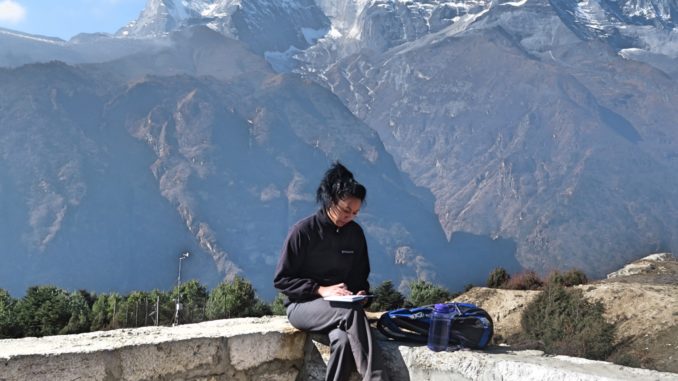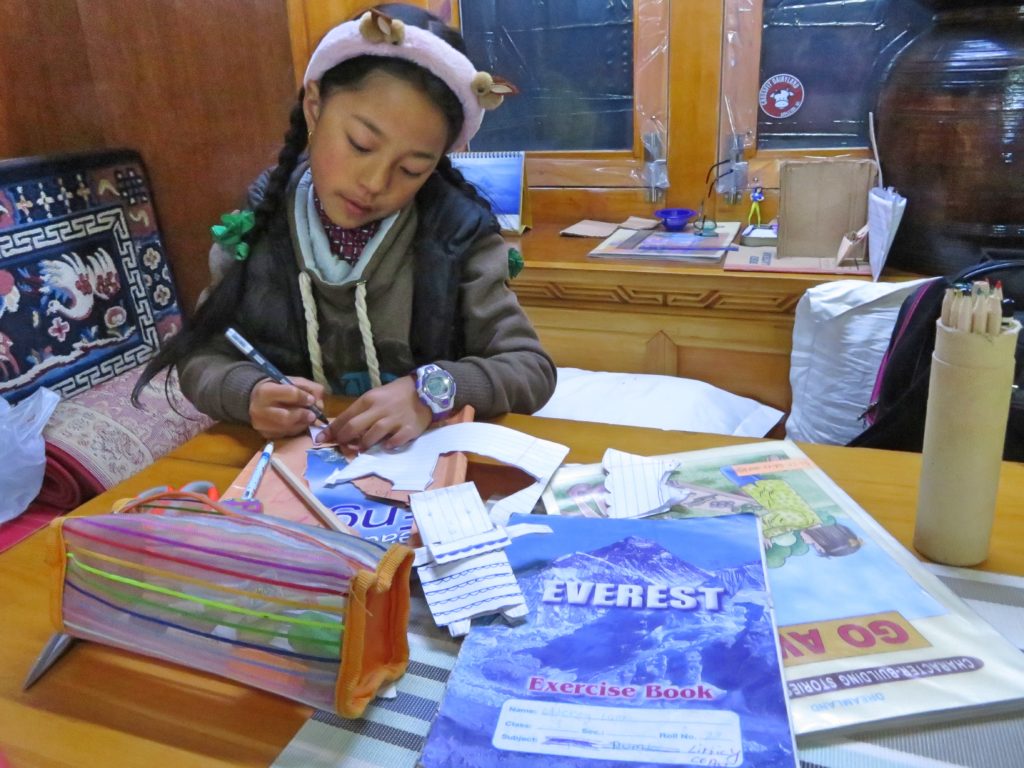
by: Jolynna Sinanan, University of Sydney
We all agree that participant observation, ‘hanging out’, ‘being there’ and ‘being in the field’ is essential to conducting fieldwork, so as fieldwork plans have been dashed during this pandemic, it is understandable to feel deflated. There has been renewed interest in digital methods and digital ethnography to collect qualitative data about cultures and societies. However there have been fewer discussions about other ways of gaining anthropological knowledge. During these unique circumstances, I have been reflecting on other ways to know my field site, beyond the interviews and participant observation. My emerging research on mobile media and mobile livelihoods in the Everest tourism industry illustrates three points. Firstly, while methods in digital ethnography and digital anthropology are incredibly useful during social isolation, there are other ways for understanding how the digital is imbricated in daily life (see Lupton, 2020). Secondly, ethnographic research is important, but it is only one piece for generating knowledge in an anthropological project and thirdly, as a related point, there are ways we can build on anthropological ways of knowing our field sites when we can’t conduct ethnographic fieldwork.
Digital media, sociality, and digital opportunism

My current research focuses on digital practices of workers (guides and porters) in the Everest tourism industry and on the ways that mobile media shapes the meanings of Everest for tourists visiting the region. When Nepal closed its borders to international tourists in March 2020, my month of fieldwork during Nepal’s Year of Tourism: Visit Nepal 2020 was effectively cancelled. I already had a digital ethnographical component built into the research through connection with guides and porters on Facebook, Messenger, and Instagram and where I intended to ask tourists about images they had taken on treks and circulated on social media. Conducting this aspect of the ethnography was still a possibility without fieldwork. However, as much as digital media compliments, supplements, or is integrated into several aspects of everyday life, as far my relationship with digital media as an ethnographic tool goes, it is still to treat digital media with an anthropological sensibility: digital media is inextricable from conditions of sociality.
Digital media is one entry point for understanding people’s lives but it is also embedded within conditions of sociality. Posts to platforms such as Facebook or WhatsApp can provide valuable insights about people’s existing modes of sociality, but only if the researcher is also included in these modes of sociality. For example, I could probably still conduct interviews over webcam or phone, or chat over Messenger. However, being included in my participants’ social networks, and having established myself in those networks as organically as I could despite being a researcher, it would not be appropriate to be constantly checking in through Messenger in a way that is not socially genuine, or altering phone calls to become pseudo interviews. When lockdowns started, I called participants, friends really, in much the same way as I called friends and relatives overseas. Over the last few months, I continue to observe posts that are visible to me, however I have remained a benign presence on their social media feeds, I ‘like’ and comment on posts semi-regularly. If I am to preserve these social relationships into the future when I can return to the field, I don’t want to be a digital media pest now that would make our social relationships go ‘clunk’ and cause awkwardness into the future.
How much do I know about Everest anyway?
Anthropology has had a long-standing interest in individual and collective imaginations and aspirations, although these themes are incredibly difficult to gather empirical data on. In many ways, Everest tourism is an ideal ‘site’ for researching imaginations and aspirations, because for many visitors, their main encounter with Everest is through technologies of visual cultures rather than knowledge or scholarship on Nepal, Tibet, India, or the Himalayas. So to begin to understand how my field site is understood symbolically in popular imagination, I am curating a historicity of Everest through visual images, from topography and scientific mapping, to newspaper articles of the first ascent, to films of the 1996 disaster, to commercial trekking in social media. Collective representations, shared ways of thinking, standards, and myths (Jacquemet, 2017) can help to think more analytically about the anthropological value of my research: What does it say about imaginations and aspirations of humans when they relate to this monumental ‘thing’ Everest?
So what else can I do when I can’t do fieldwork?

Roger Sanjek (2010) has argued that ethnography has a distinctively dual nature through practice as undertaking fieldwork but also through product as ethnographic writing. If a core value of anthropology is to strive for holistic contextualisation: ‘trying to understand how people relate to everything that bears upon their lives’ (Miller, 2018: 6) then the ethnographic writing that results from our own fieldwork can generate fruitful dialogue with previous ethnographic products. While I am unable to generate my own ethnographic writing from not being able to carry out fieldwork, I am trying to use this time to read very closely two recent ethnographic monographs on Nepal and Everest to know the themes in them with enough depth to inform my fieldwork. If I am really ambitious, I may write book reviews of them to submit to journals if I can’t develop my own original research articles this year. As much as having the time to conduct prolong periods of fieldwork is a luxury, so too is having the time to do the desk work involved with anthropological inquiry. Some of us are making sourdough, some of us are knitting, and I hope that some of us can work on our anthropological expertise too, while we can’t return to the field for now.
References
Jacquemet, E. (2017). Why do people come to see Mount Everest? Collective representations and tourism practices in the Khumbu region, .Journal of Alpine Research. 105–3. http:// journals.openedition.org/rga/3844
Lupton, D. (editor) (2020) Doing fieldwork in a pandemic (crowd-sourced document). Available at: https://docs.google.com/document/d/1clGjGABB2h2qbduTgfqribHmog9B6P0NvMgVuiHZCl8/edit?ts=5e88ae0a#
Miller, D. (2018). Digital Anthropology. In F. Stein, S. Lazar, M. Candea, H. Diemberger, J. Robbins, A. Sanchez and R. Stasch (eds), The Cambridge Encyclopedia of Anthropology. http://doi.org/10.29164/18digital
Sanjek, R. (2010). Ethnography. In A. Barnard and J. Spencer (eds.), The Routledge Encyclopedia of Social and Cultural Anthropology (2nd edition). Abingdon: Routledge, pp. 243–249.

Leave a Reply
You must be logged in to post a comment.